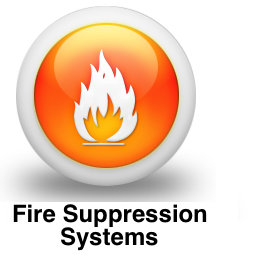Inert Gas Fire Suppression



Naturally occurring Gases often used as blends, these blends are used to reduce oxygen to below 15% and above 12%. Oxygen levels below 15% will not allow a fire to burn as the oxygen is simply not there to fuel the fire. Levels of Oxygen between 12% and 15% is adequate to sustain human life. Oxygen levels between 12% and 10% will show visible signs of effects asphyxiation Oxygen levels below 10% are extremely dangerous.
This type of fire suppression is considered a green option and does have many advantages used in the right application.
Inert Gas Fire Suppressions are commonly found with the following blends and names:
Inergen fire suppression - IG541
A Blend of Nitrogen, Argon and small percentage of CO2. This fire suppression blend is made up of 50% Argon, 42% Nitrogen and 8% Co2. What makes this fire suppression system unique? The mix of Co2 into the blend helps a humans absorbation of oxygen in a depleted oxygen environment. Co2 also increases the heart rate and induces hyper ventilation so that the body breathes in more than normal! On the flip side the disadvantage of IG541 fire suppression comes with contaminated air with bi-products of combustion that are breathed in with the intensified inhalation.
Argonite fire suppression - IG55
This is a blend of 50% Argon & 50% Blend of Nitrogen. The fire suppression gas is blended to offer better buoyancy for the fire suppression agent keeping the fire suppression gas at higher levels in the protected enclosure for longer!
I3 Fire Suppression - IG55
This fire suppression system is the same as above, however, it uses regulated valves to reduce the pressure shock when the fire suppression system is initially deployed! Again this system is a blend of 50% Nitrogen and 50% Argon. By reducing the initial pressure shock with the fire suppression generates in the first 10 seconds of discharge, the required number pressure relief vents are reduced.
I3 Fire Suppression - IG55
This is not as common these days, but is a simple and effective solution. Argon is heavier than air and used as a single compound is makes this fire suppression system easier and cheaper to refill. The disadvantage of this fire suppression system is the weight of the gas which reduces the hold time.